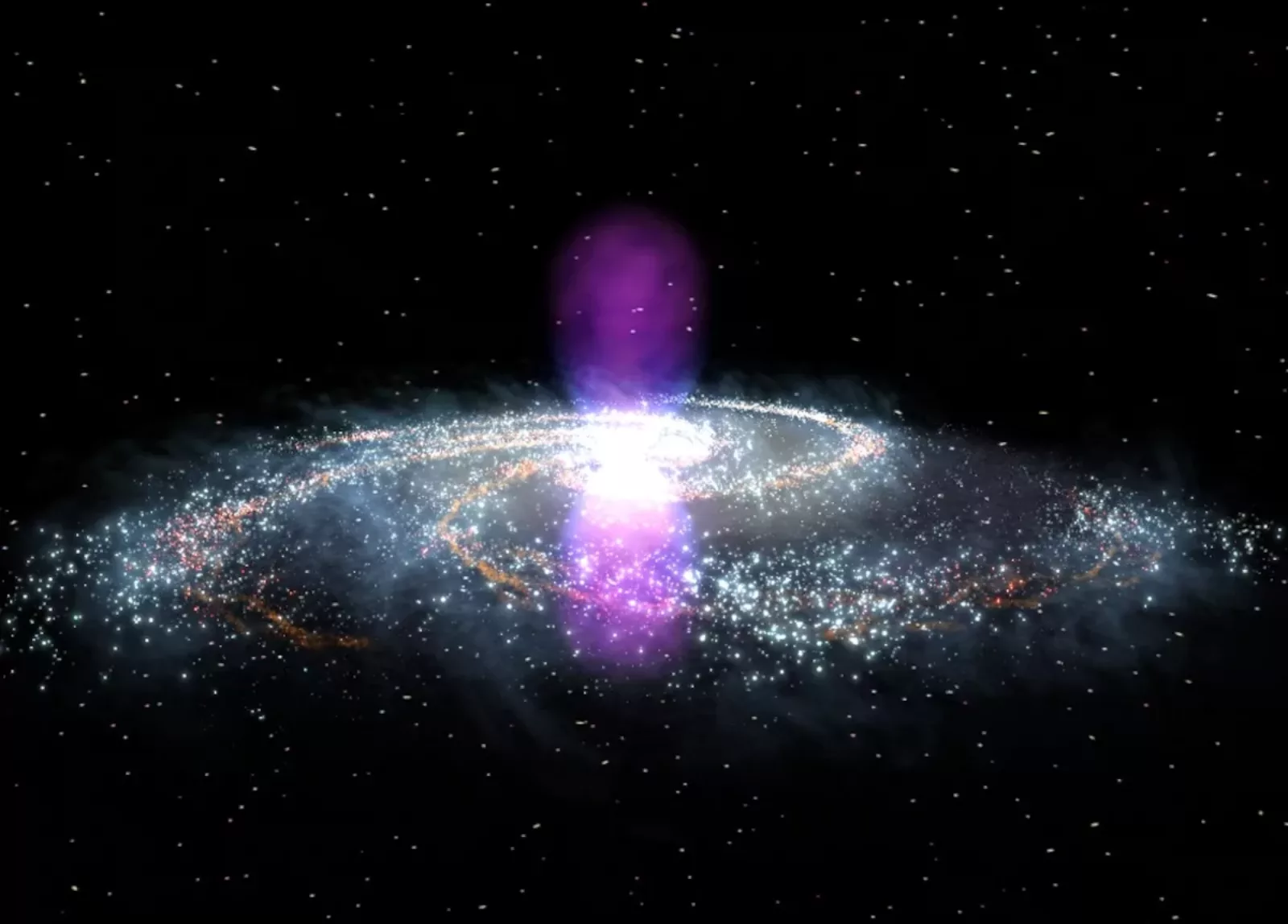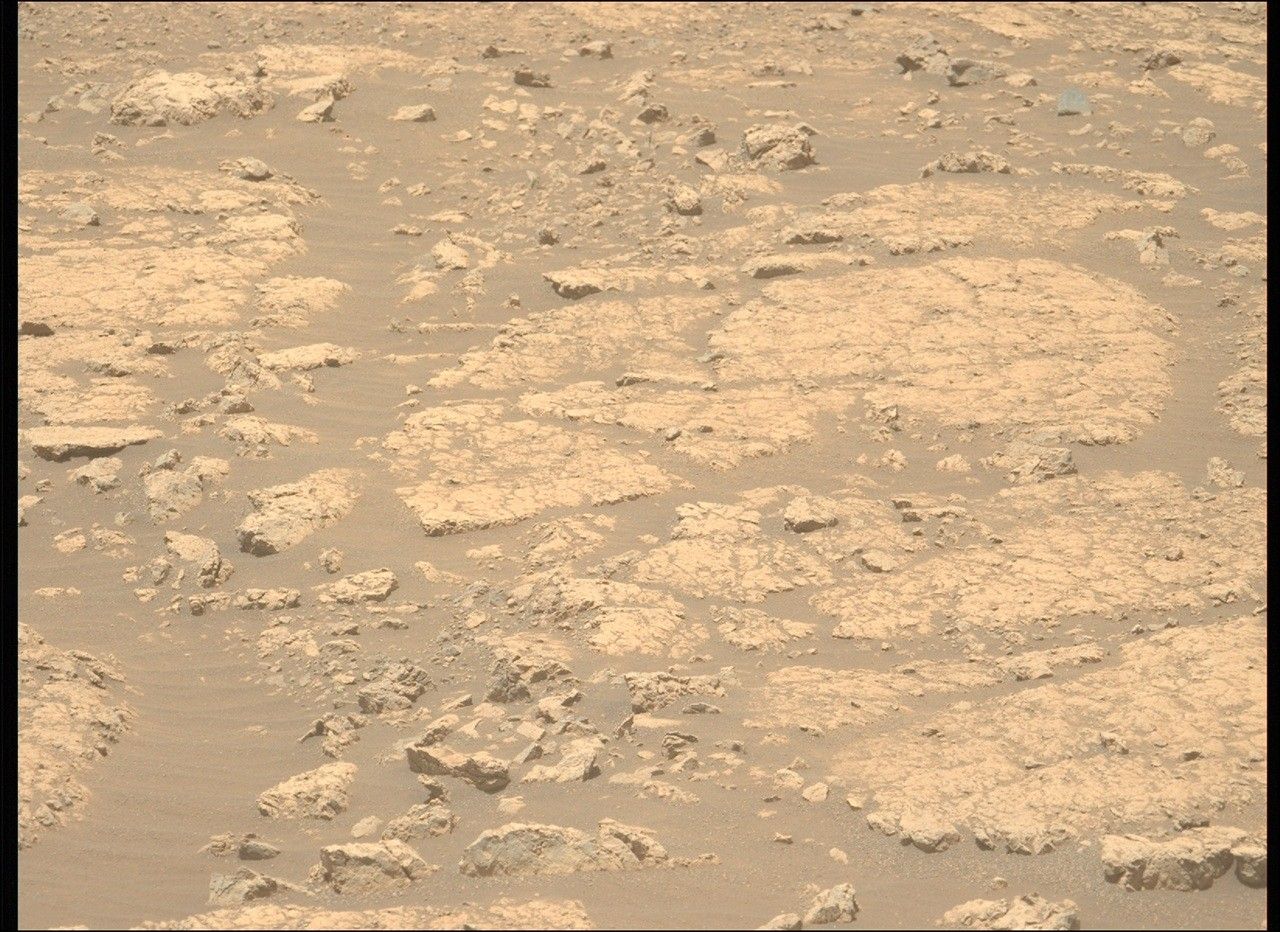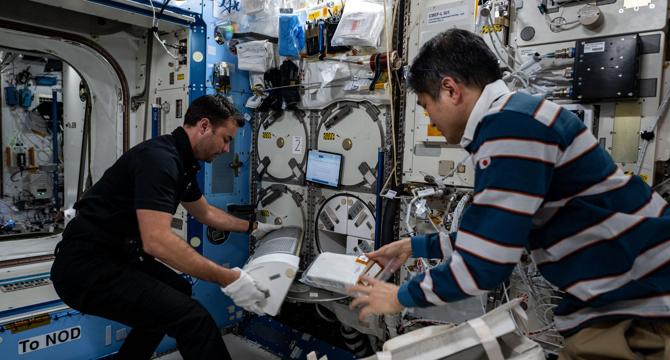Space News
Medium
127

Image Credit: Medium
Cyclop Spacetech Came to Medium
- Cyclop SpaceTech is a research and content platform focusing on the business aspects of the space industry.
- Themes covered include startups, investors, public equities, weekly news from an investment perspective, consolidation trends, commercialization, and more.
- The platform targets investors, founders, and individuals interested in the future of the space economy.
- Content is updated regularly to provide sharp and useful insights.
Read Full Article
7 Likes
Brighter Side of News
24

Image Credit: Brighter Side of News
Astronomers discovered Fermi bubbles hiding at the center of the Milky Way
- Astronomers found cold gas clouds inside Milky Way's Fermi bubbles, challenging old theories.
- These 10,000-degree clouds, higher than galaxy's center, hint at Fermi bubbles' youth.
- Observed using radio waves, they suggest cold gas can survive in extreme conditions.
Read Full Article
1 Like
Livescience
86

Image Credit: Livescience
Whooo's there? James Webb telescope spots 'Cosmic Owl,' super-rare structure formed from colliding ring galaxies
- A 'Cosmic Owl' formation spotted by James Webb Telescope through rare galaxy collision.
- Pair of ring galaxies, 'Cosmic Owl' formed through rare head-on collision.
- Structure, resembling an owl, offers insights into galaxy evolution processes simultaneously occurring.
- Galactic cores act as owl's eyes, jet of particles triggers star formation.
- Researchers aim to study 'Cosmic Owl' for insights on fast star conversion.
Read Full Article
5 Likes
Nasa
275

Image Credit: Nasa
Continuing the Quest for Clays
- Perseverance rover is exploring the Krokodillen plateau in search of clay-bearing rocks on Mars to uncover clues about the planet's watery past.
- After facing challenges in sampling and abrading the breakable clay-bearing rocks, the team decided to return to a previous abrasion site, 'Strong Island,' to attempt sampling the rock with a strong clay signature.
- Perseverance achieved the longest driving distance ever on another planet, covering 411.7 meters to reach the 'Main Topsail' locality for exploration.
- Special visitors, Madeline and Joshua, were named honorary Mars 2020 Operations Team Members, with Madeline selecting the target 'Jigging Cove' and Joshua selecting 'Gallants' as a coring target for Perseverance's investigation.
Read Full Article
16 Likes
Discover more
Brighter Side of News
333

Image Credit: Brighter Side of News
Astronomers capture the first direct images of hidden exoplanet using JWST
- The James Webb Space Telescope reveals a hidden exoplanet, TWA 7 b, for the first time.
- Having a new tool, astronomers overcame the challenge of capturing direct images of exoplanets.
- The discovery opens up possibilities to find smaller, cold worlds beyond our solar system.
- This achievement marks a significant breakthrough in exoplanet research with Webb's capabilities.
Read Full Article
20 Likes
Nasa
12

Image Credit: Nasa
Tuesday’s Station Research Advancing Crew Health as Crew Unpacks Cargo
- Biomedical research focused on cellular immunity and electrical muscle stimulation aboard the International Space Station on Tuesday.
- The crews conducted cargo transfers, exercise gear maintenance, and various space investigations throughout the day.
- Activities included studying the effects of microgravity on cellular immunity, enhancing space workouts with electrical muscle stimulation, and exploring space agriculture.
- The crew members, including private astronaut Tibor Kapu from Hungary, were busy with research samples, lab maintenance, crew support activities, and repairing components in different modules of the ISS.
Read Full Article
Like
Nasa
271

Image Credit: Nasa
Helio Highlights: May 2025
- In May 2025, a look back at the stunning auroras of the Mother's Day 2024 solar storms.
- Solar storms lit up the sky, creating colorful Northern and Southern Lights globally.
- Scientists studying heliophysics observe Sun's cycles and prepare for space weather impacts.
- Auroras, while mesmerizing, can disrupt GPS systems, power grids, and satellite communications.
Read Full Article
16 Likes
Earthsky
70

Image Credit: Earthsky
Human dam-building has caused a small (but astonishing) pole shift
- Human dam-building over the past two centuries has caused a shift in Earth's poles by about a meter and resulted in a 21-millimeter drop in global sea levels, according to a study in Geophysical Research Letters.
- The process, known as true polar wander, occurs when mass is redistributed around the planet's surface, causing the outermost solid layer to wobble and move relative to the magma below it.
- Researchers found that the construction of 6,862 dams from 1835 to 2011 led to two phases of pole shifts, with the North Pole moving 20.5 centimeters toward the 103rd meridian east and then shifting 57 centimeters toward the 117th meridian west.
- The study highlights the importance of considering water impoundment from dams when calculating future sea level rise and its impact on global sea levels.
Read Full Article
4 Likes
Popsci
0

Image Credit: Popsci
Pacific island wildlife refuge spared from SpaceX rocket project
- Johnston Atoll, a Pacific island wildlife refuge, spared from becoming a SpaceX rocket site.
- The Air Force cancels plans following pressure from conservationists and concerns about the environment.
- Johnston Atoll has a complex military history but serves as a habitat for bird species.
Read Full Article
Like
Brighter Side of News
45

Image Credit: Brighter Side of News
Dark dwarf stars lurking at the center of our galaxy could reveal the true nature of dark matter
- Scientists study dark dwarf stars at galactic center to uncover dark matter mystery.
- Dark matter interactions with dark dwarfs may stabilize and illuminate these celestial bodies.
- Presence of dark matter could explain why small objects like brown dwarfs remain luminous.
- Research suggests dark dwarfs could hold crucial evidence about dark matter's nature.
Read Full Article
2 Likes
Metro
94

Image Credit: Metro
Earth is spinning so fast that tomorrow will be shorter – but is time going faster?
- Time feels like it's on fast-forward for many individuals, impacting memory and experiences.
- Research explores the complexities of how humans perceive and experience time differently.
- Earth's faster spin is shortening days, impacting timekeeping systems like GPS, with upcoming 'negative leap second.'
- Digital hyperstimulation is affecting memory formation, leading to stress and time mismanagement.
- Constant novelty in the digital age is altering how we engage with time and memories.
Read Full Article
5 Likes
Metro
152

Image Credit: Metro
Scientists now believe Earth is sunken near the centre of a giant cosmic void
- Scientists believe that the Milky Way may be located in a cosmic void, an area of the universe that is uncommonly empty, leading to the observation of galaxies speeding away from each other at a faster pace nearby.
- Research presented at the Royal Astronomical Society's National Astronomy Meeting proposes the existence of a 'void' as a potential explanation for this cosmic phenomenon.
- Dr. Indranil Banik from the University of Portsmouth discussed the data derived from baryon acoustic oscillations, which act as a 'standard ruler' to chart cosmic expansion history and support the theory of an underdensity in the universe.
- The theory posits that living in a void could distort our understanding of the universe's expansion rate and redshift measurements, with potential implications for the eventual heat death of the universe.
Read Full Article
9 Likes
Knowridge
45

Image Credit: Knowridge
Space ice isn’t just frozen water—it’s full of tiny crystals
- Ice in space, known as low-density amorphous ice, was believed to be entirely disordered but new research shows it contains tiny crystals.
- Computer models and lab experiments suggest space ice includes three-nanometer-wide crystals embedded in its structure, challenging previous assumptions.
- The partially crystalline structure of space ice could impact cosmic processes and the arrival of life ingredients on Earth, according to lead author Dr. Michael B. Davies.
- The findings also have practical implications for materials like fiber optics, hinting at possible performance improvements by understanding the presence of tiny crystals.
Read Full Article
2 Likes
Metro
115

Image Credit: Metro
This week’s low-hanging Buck Moon will show a strange illusion on the horizon
- The 'Buck Moon' illusion occurs when the full moon is low on the horizon.
- The moon may seem larger near the horizon due to the 'Moon illusion'.
- This week's Buck Moon will display yellow, orange, and red hues due to atmosphere scattering.
- Additionally, the Buck Moon of 2025 will be furthest from the Sun.
- Overall, enjoy moongazing and spot Mars and Saturn in the night sky.
Read Full Article
6 Likes
Analyticsindiamag
499

Image Credit: Analyticsindiamag
Noida’s Suhora Brings Hyperspectral Satellite Services to India with Orbital Sidekick
- Noida-based Suhora Technologies partners with US-based Orbital Sidekick to introduce hyperspectral satellite services in India.
- Suhora becomes the first Indian company to offer commercial operational hyperspectral data across the VNIR-SWIR spectrum.
- The collaboration involves integrating OSK’s hyperspectral data into Suhora’s SPADE platform for material detection and classification in sectors like mining and environmental monitoring.
- Suhora's partnership with OSK will provide advanced capabilities in rare earth mineral mapping, oil spill detection, and methane leak monitoring.
Read Full Article
4 Likes
For uninterrupted reading, download the app